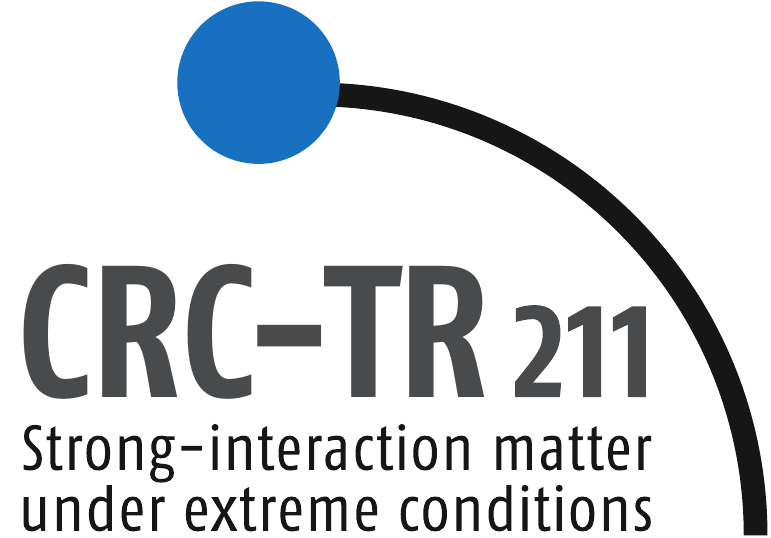
 Nuclear Theory
Colloquium
Nuclear Theory
Colloquium 
 Nuclear Theory
Colloquium
Nuclear Theory
Colloquium Venue: Physics Building, Max-von-Laue-Str. 1, Seminar Room PHYS 2.116
Time: Thursday, January 17, 4:30pm (s.t.)
Contact: hees@th.physik.uni-frankfurt.de
Within the discipline of HEP, the Elementary Particle Model (EPM) of Kim and Primakoff, is a phenomenological approach, which parametrizes the nuclear charge-changing currents in terms of the trinucleon form factors, in analogy with the corresponding nucleon weak currents. EPM treats pair ($^{3}He, 3 H) \simeq (\text{h},\text{t})$ as elementary, and this is found to give as good a result, as those obtained with more complex structures for the ground state in nuclear microscopic models.
Within low energy nuclear structure studies, a new group $\text{SU}_{\mathcal{A}}(2)$, called nusospin has been proposed. Just as one takes the pair (p,n) as forming the fundamental representation of the nuclear SU(2)-isospin group, in the same manner one hypothesizes that the pair (h,t) forms the fundamental representation of the new nusospin $\text{SU}_{\mathcal{A}}(2)$ group. The physical justification of this new model shall be discussed . We shall discuss several empirical evidences favoring A = 3 clustering in nuclei. So, the EPM model in particle physics, provides unequivocal support to the nuclear physics model of the $\text{SU}_{\mathcal{A}}(2)$ nusospin group. Both of these justify the treatment of the pair (h,t) as a fundamental entity.
The N~Z nuclei are well explained by the
SU(2)-isospin group, with the (p,n) pair providing a basis for the
description of these nuclei, and validating the shell model structure of
these nuclei. We extrapolate this logic to find a suitable shell model
structure generated by, and validated by, the $\text{SU}_{\mathcal{A}}(2)$
nusospin group. From amongst all the neutron rich nuclei, as per the
$\text{SU}_{\mathcal{A}}(2)$ nusospin symmetry, we assume that the N = 2Z
nuclei be treated as composed of N number of elementary tritons. Thus the
nucleus $^{A=3Z}_Z \text{X}_{N=2Z} \equiv \text{Z}(_{1}^{3}\text{H}_2)$.
To calculate binding energies of nuclei with N = 2Z, for Z ranging from 5
to 120, we employ successful relativistic mean field (RMF) models with
latest interactions like NL3, NL3, and TM1. We then extract one- and
two-triton separation energies of neutron-rich nuclei. The experimental
data exhibits even-odd effects, and so does our RMF results in this
region. Most importantly, we make unambiguos prediction of six new magic
nuclei: $_{8}^{24}\text{O}_{16}$, $_{20}^{60}\text{Ca}_{40}$,
$_{35}^{105}\text{Br}_{70}$, $_{41}^{123}\text{Nb}_{82}$,
$_{63}^{189}\text{Eu}_{126}$ and $_{92}^{276}\text{U}_{184}$. Conventional
studies of one-neutron and two-neutron separation energies, within the RMF
models, are also found to confirm extra stability of these new magic
nuclei. As per existing data, the first two of the above new magic nuclei,
have already been experimentally discovered. Thus the other four, should
be taken as unique predicions of our model. Given present emphasis on
superheavy nuclei, $_{92}^{276}\text{U}_{184}$, may be easily accessible
to experimental confirmation due to its relatively small charge, Z=92.
What seems to be happening in the neutron rich nuclei, is that, as the
neutron number increases, the SU(2)-isospin symmetry submerges within the
nuclear medium and thereby inducing a new $\text{SU}_{\mathcal{A}}(2)$
nusospin symmetry.
References:
S A Abbas, Mod Phys Lett A 33
(2005) 2553; A 19 (2004) 2365; A
16 (2001) 755.
S A Abbas,S Ahmad, Int J Mod Phys E 20
(2011) 2101.
A A Usmani, S A Abbas, U Rahaman, M Ikram, F H Bhat, Int J Mod Phys E 27 (2018) 1850060.